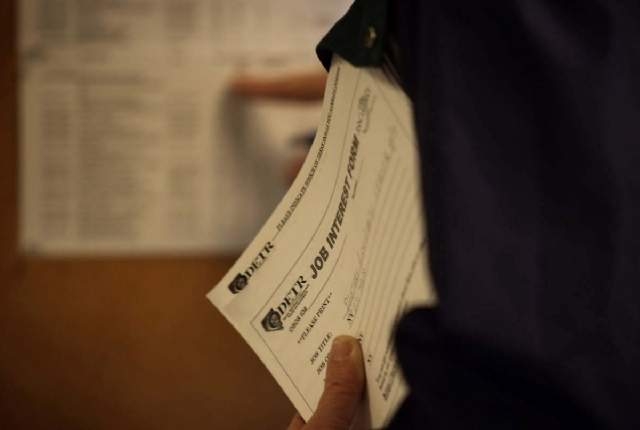Las Vegas unemployment rate falls to 6.3 percent
The number of jobless Las Vegans continued to fall in October as the city's service industries grew.
The Las Vegas Valley's unemployment slipped to 6.3 percent in the month, down from 6.7 percent in September and 7.1 percent in October 2014, the state Department of Employment, Training and Rehabilitation reported Tuesday.
Employers across the valley added 31,100 jobs year over year in October, for a growth rate of 3.5 percent. That's slightly better than statewide expansion of 3.4 percent, and well above national job formation of 2 percent.
Year-to-year job gains happened across the board. Construction companies added 8,400 workers, or 18.7 percent, for a work force of 53,400. Professional and business services firms, including law firms, architecture studios and accounting firms, grew by 7,600 positions, or 6.4 percent, to 126,800 employees. Leisure and hospitality gained 8,300 workers, or 2.9 percent, to end October employing 291,500 locals.
In all, the number of locals out of work and seeking a job fell to 66,400, down 8.8 percent from 72,800 a year earlier and roughly half of a recession-era peak of about 130,000.
Improvements in the job market lured new workers into the city's labor pool: The region's work force expanded by 29,700 people, or 2.9 percent, to 1.05 million year to year in October. That rise kept job growth from cutting even more into unemployment.
The employment department reported Nov. 18 that Nevada's October jobless rate was 6.6 percent, though state rates are seasonally adjusted and can be less volatile than local numbers.
Despite job growth, Nevada ranked No. 3 in the nation for joblessness in October, behind only West Virginia (6.9 percent) and New Mexico (6.8 percent).
If you include discouraged workers and part-timers who would rather have full-time employment, Nevada's jobless rate averaged 14.8 percent from the fourth quarter of 2014 through the third quarter of 2015, according to the U.S. Bureau of Labor Statistics.
The official U.S. rate was 5 percent, while the federal discouraged-worker rate averaged 10.8 percent.
Contact Jennifer Robison at jrobison@reviewjournal.com. Find @_JRobison on Twitter.

















